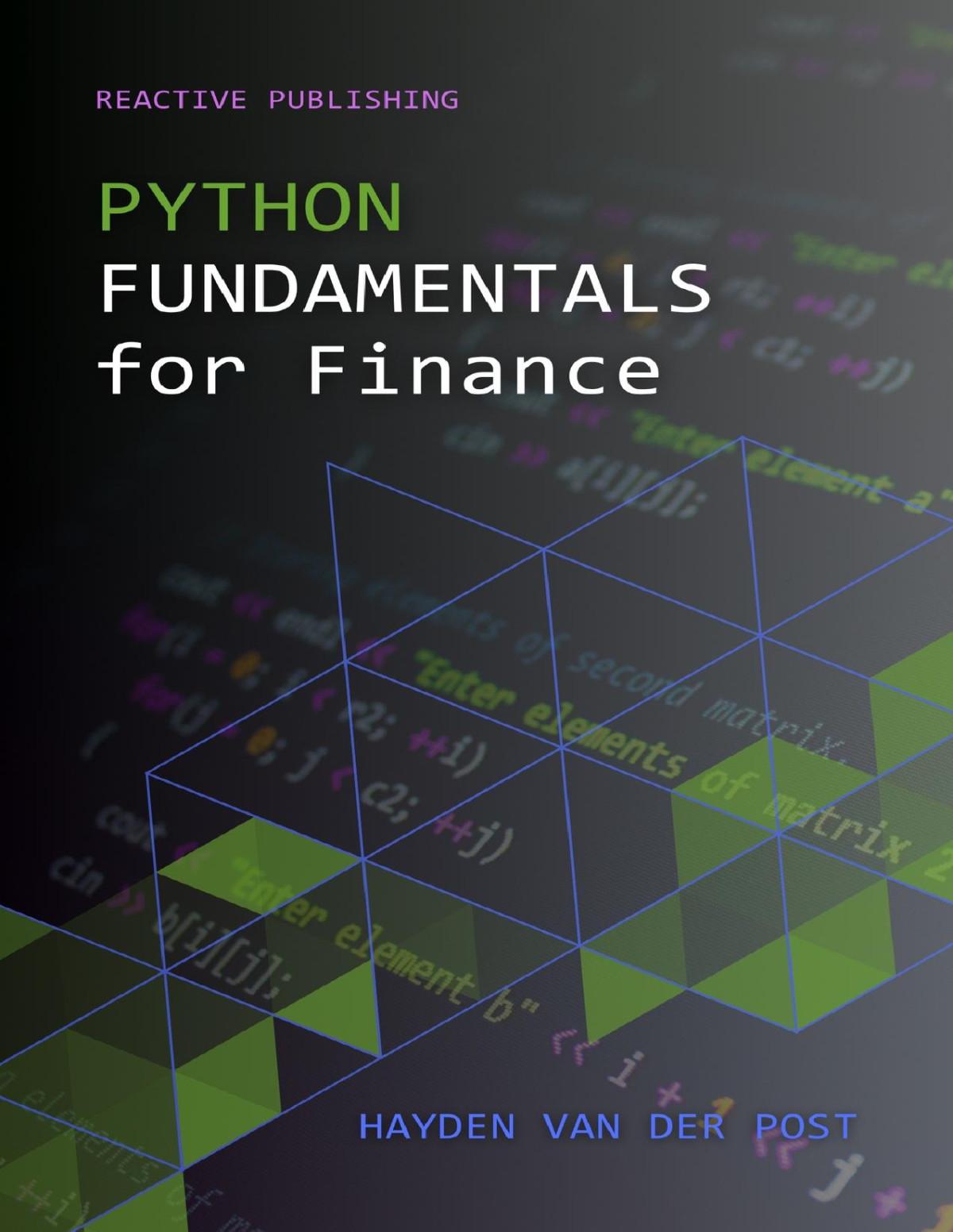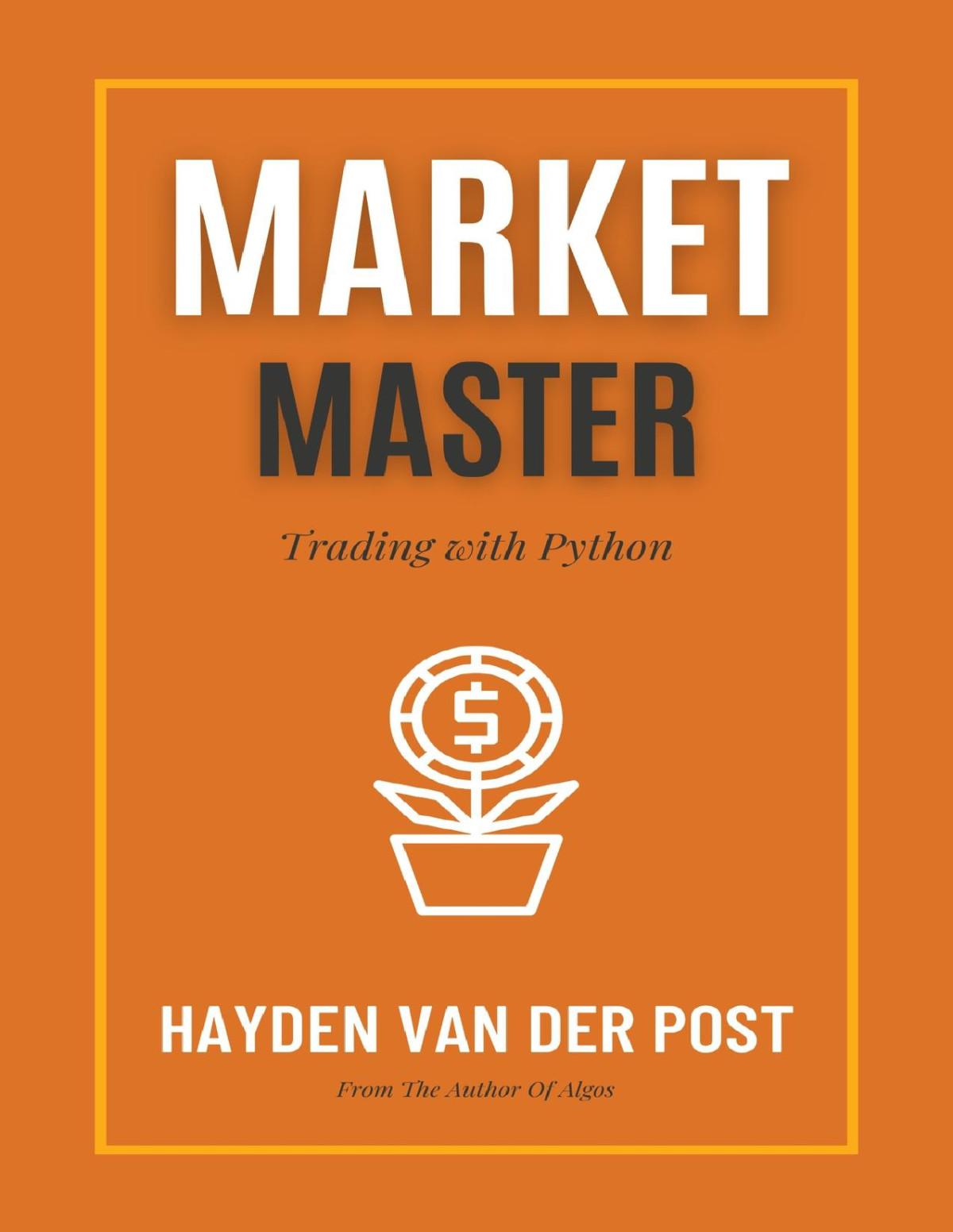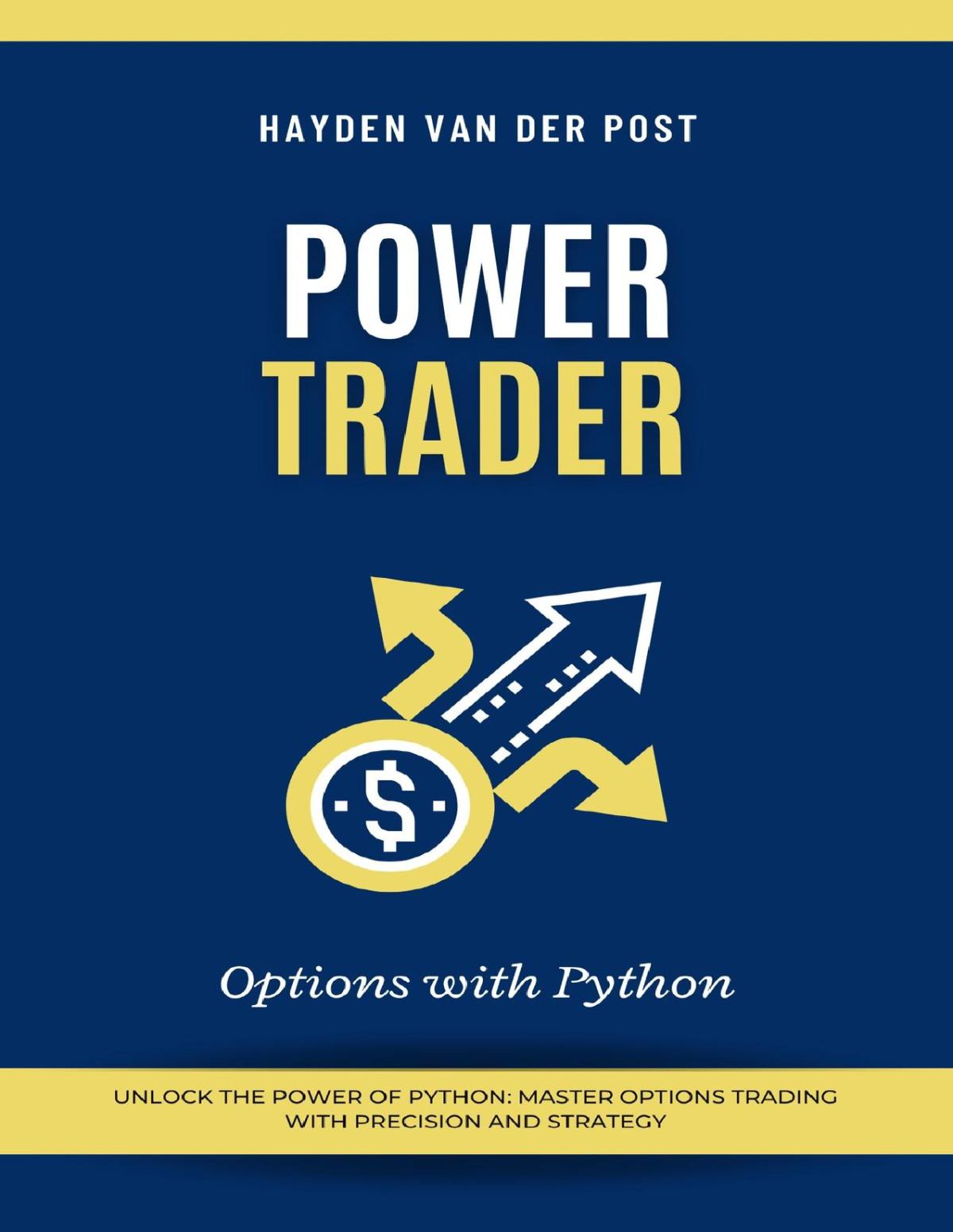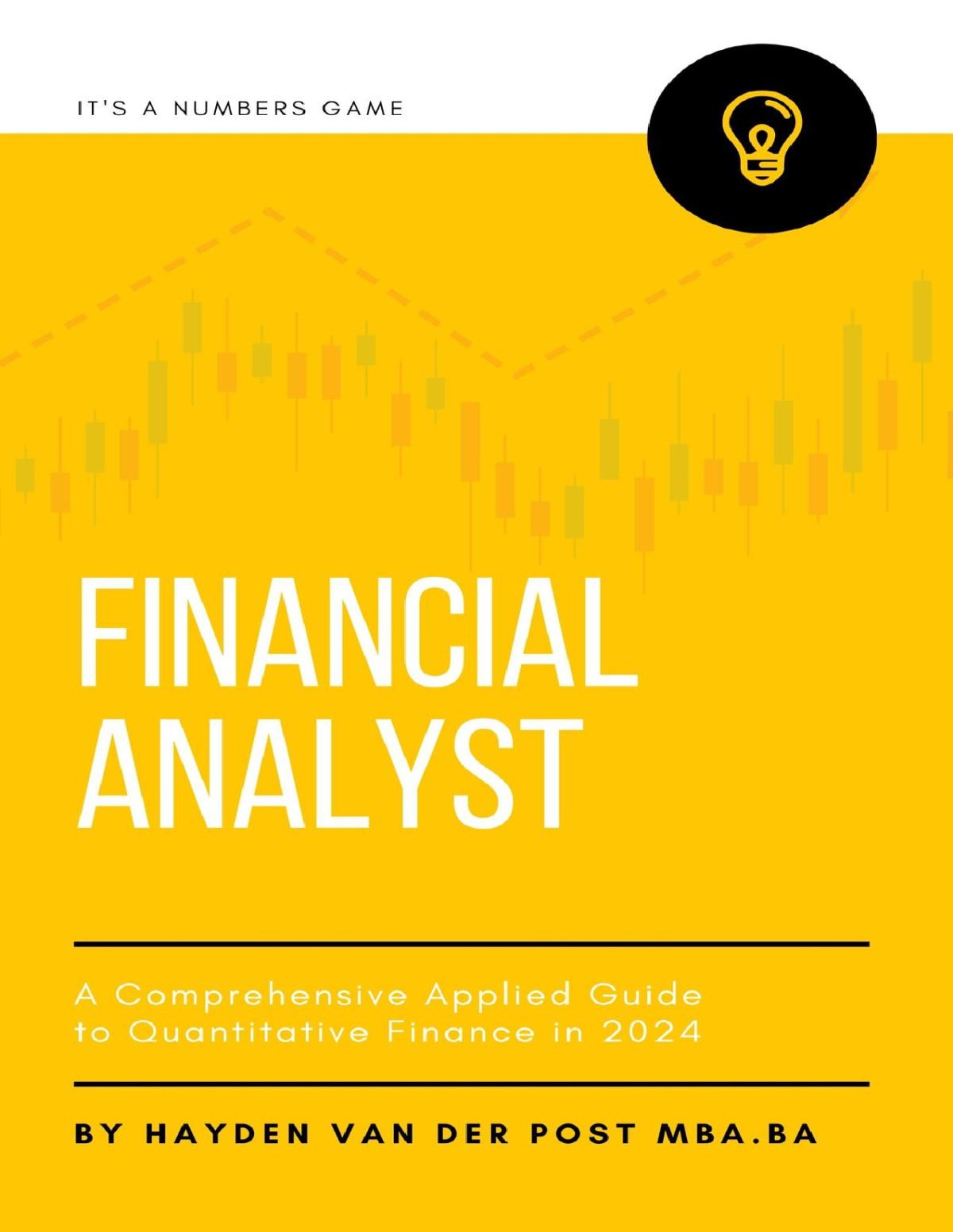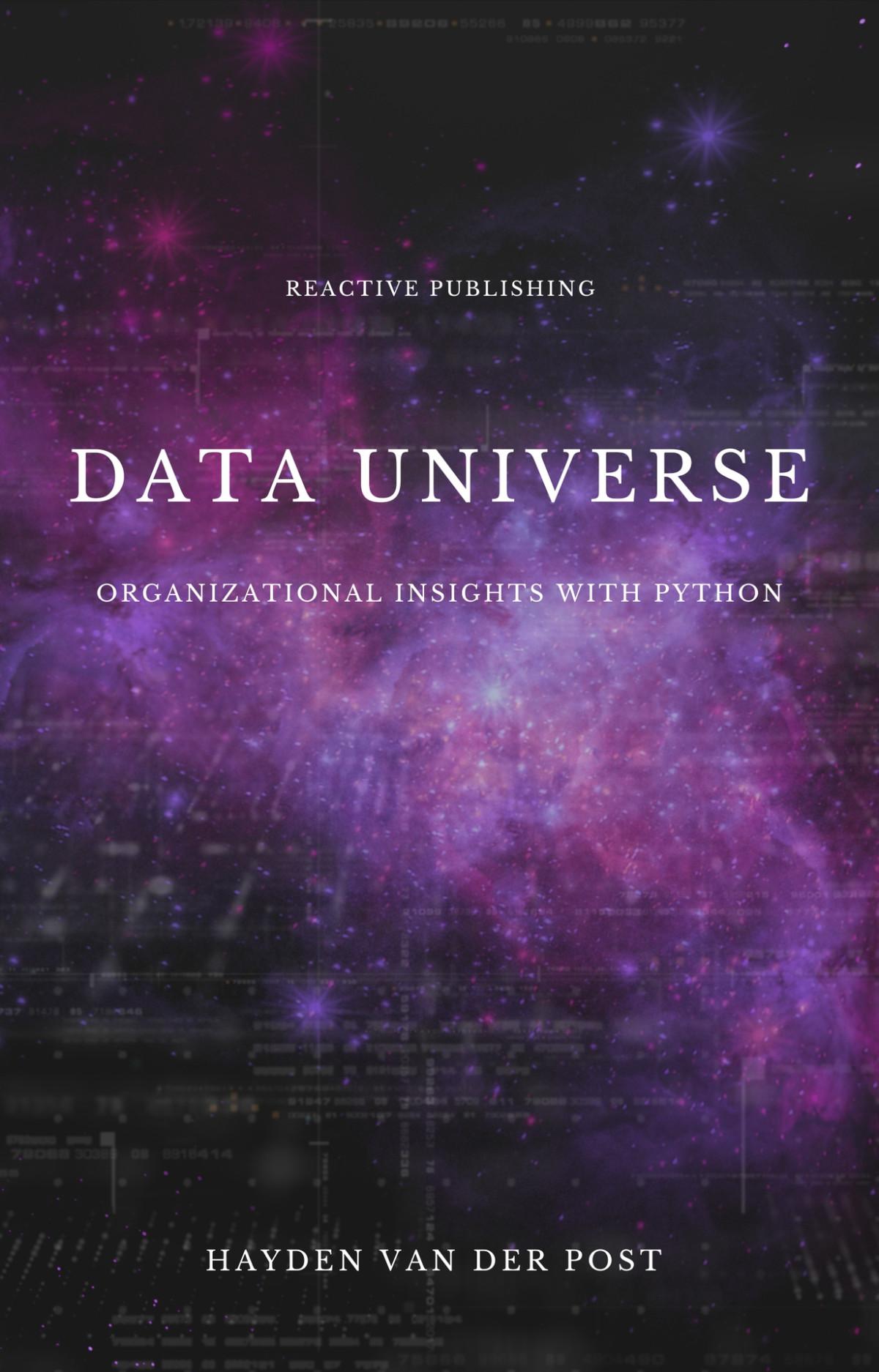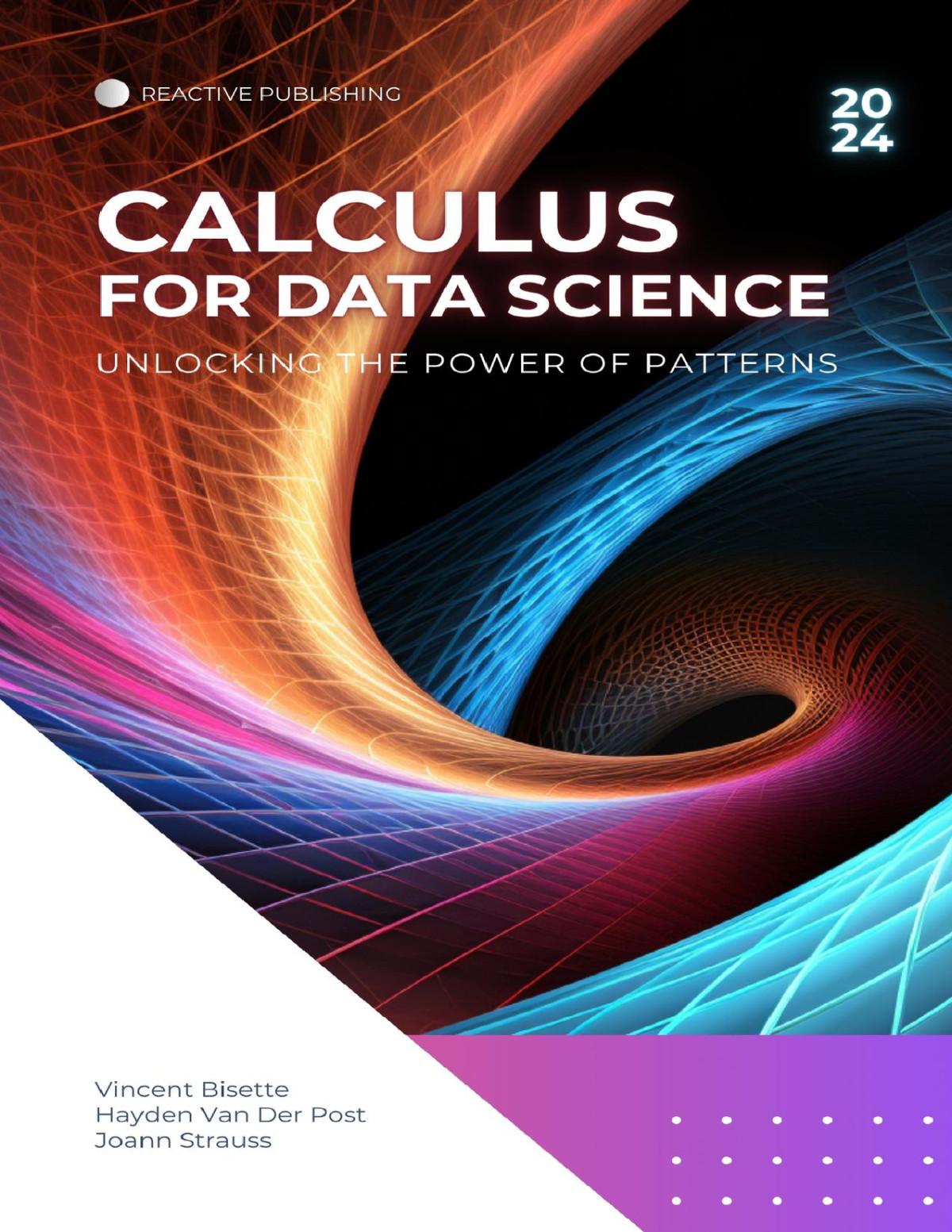Types of Algorithmic Trading
Algorithmic trading, by its very nature, is a multifaceted tool that may be customized to meet a broad spectrum of trading objectives. Its diverse utilisation is reflected in the myriad types of algorithmic trading that have been developed to cater to the ever-evolving needs of traders across a wide range of markets. The versatility of algorithmic trading's applications has led to its widespread adoption, transforming it into a linchpin of modern financial systems.
Let’s dive deeper into the types of algorithmic trading, tailoring our understanding of this instrument to the vast landscape of trading possibilities it creates:
1. Statistical Arbitrage: This form of algorithmic trading uses complex mathematical models and statistical methods to discover and monetize market inefficiencies. Arguably the most scientific form of financial speculation, statistical arbitrage algorithms aim to generate consistent, lowrisk profits by conducting tens of thousands of simultaneous trades and betting on the mean-reversion of prices to their historical average.
2. Momentum Based Strategies: These employ algorithms designed to identify market trends, such as increasing or decreasing prices, and exploit them for potential profits. They operate on the principle that sizable price movements often continue or accelerate in their existing direction, allowing traders to capitalize on these trends before they dissipate.
3. Mean Reversion Trading: Algorithms look for price patterns where the belief is that deviation from a mean price represents a market inefficiency that will self-correct. Because financial time-series data often displays short-term mean-reverting tendencies, this type of algorithm can prove highly profitable.
4. Sentiment Analysis Trading: This relatively newer type of algorithmic trading utilizes Natural Language Processing models to analyze news and social media feed for bullish or bearish market sentiments. They then align
their trading actions with the inferred market sentiment, aiming to leverage the wisdom of the crowd.
5. High-Frequency Trading (HFT): This form of algorithmic trading exploits minimal gains from small price movements within a very short time frame, often milliseconds or microseconds. HFT algorithms execute thousands, even millions, of trades per day to capture these gains, often providing liquidity to markets and earning on bid-ask spreads in the process.
6. Pairs Trading: This involves identifying two securities that are historically correlated and then betting on the return to correlation if it weakens. This strategy is statistically driven and algorithmically executed, with the algorithm monitoring the strength of the price relation between the pair and executing trades when certain predefined conditions are met.
7. Machine Learning & AI Trading: These algorithms use artificial intelligence and machine learning algorithms to learn from data, improve their strategies, and better adapt to changing market conditions. They are often used in conjunction with other algorithm types, offering the potential to build sophisticated, autonomous trading systems.
8. Market Making: Market making algorithms are designed to place a limit order to sell (or offer) above the current market price or a buy limit order (or bid) below the current price to benefit from the bid-ask spread.
9. Trend Following Strategies: These are the most common strategy, they aim to leverage market scenarios where a security is exhibiting strong upward or downward momentum. The algorithm typically uses technical indicators to identify market trends and place trades that follow these trends.
10. Quantitative Trading: This algorithmic trading type uses quantitative analysis, a methodology using mathematical and statistical modeling, measurement, and research, to understand financial markets and make trading decisions.
11. Index Fund Rebalancing: An index fund replicates the performance of a benchmark index, such as the S&P500. When markets close, these funds rebalance their portfolios causing substantial volume of trades. An algorithmic strategy can be designed to take advantage of these trades that are executed at the precise closing times.
12. Scalping: This form of algorithmic trading exploits small changes in the bid-ask spread. It is a quick process and works best in high liquidity markets.
Each type of algorithmic trading strategy offers unique advantages and fits different market conditions and trading philosophies. With these tools at their disposal, traders can choose, adapt, and even blend different types of algorithmic trading approaches to optimize their strategies and maximize returns.
While the flexibility of algorithmic trading is a strength, it also requires a deep understanding of the global financial market. Algorithmic traders should not only be versed in the various types of algorithmic strategies but also have a solid comprehension of the economic factors influencing the markets. Only then, can they truly harness the full potential of algorithmic trading and navigate through the relentless tides of the trading landscape.
The Benefits of Algorithmic Trading
Stepping into the realm of algorithmic trading is akin to stepping into a world where trading is no longer just an art – it becomes an intricate blend of art and science. Filled with data-based decision making, computergenerated precision, and ceaseless operations, algorithmic trading has numerous benefits that make it highly appealing to investors, traders, and financial institutions alike. Let's delve into the advantages that algorithmic trading provides to various market players.
1. Precision & Speed: Human trading, regardless of the skill level, cannot match the speed and precision that computers bring to the table. In a space where a millisecond's delay can be a difference between profit and loss, the
speed offered by algorithmic trading is invaluable. Trades are executed swiftly, ensuring always-on-time execution of strategies.
2. Elimination of Human Error & Emotion: Traders are not immune to the pressures that fluctuating markets bring. Decisions taken under emotional stress or because of fatigue from extensive market analysis can be damaging. With algorithmic trading, these concerns get addressed as the algorithms follow the precise, emotionless strategy that they've been programmed to.
3. Scalable & Efficient: Algorithmic trading equally handles one or one thousand trades, implementing orders tirelessly and consistently. Automation allows for 24/7 monitoring and execution of trades as per the predefined strategy, across markets, without any dip in efficiency.
4.Profit Opportunities: By identifying more potential trades based on defined algorithms, algorithmic trading can help to significantly increase profit-making opportunities over manual trading.
5. Backtesting: Algorithmic trading allows for extensive backtesting, where a strategy can be applied to historical data to determine its viability and profitability before it is used in live trading. This allows traders to fine-tune their strategies, discover potential pitfalls, and optimize their trading algorithm before it is applied to real-world trading scenarios.
6. Diverse Trading Strategies: With algorithmic trading, applying diverse trading strategies across multiple trading accounts and markets becomes easily manageable. One can simultaneously execute long-term and shortterm strategies or implement different strategies like mean-reversion, pair trading, statistical arbitrage and others, on different assets.
7. Execution at Optimal Prices: Algorithmic trading ensures that trades are executed at the best possible prices—buy orders are performed at lower than market prices, and sell orders are performed at a bit higher than market prices, ensuring better profitability.
8. Reduced Transaction Costs: The swift and precise execution of trades by algorithmic trading implies fewer chances of slippage, which in turn leads to reduced transaction costs.
9. Increased Liquidity: By continuously placing trades, algorithmic trading infuses liquidity into the markets, making them more efficient and reducing the chances of extreme market fluctuations.
10. Provides Market Anonymity: For large investors looking to make big trades, market anonymity is desirable as it wards off potential exploitative practices by other traders or brokers. Algorithmic trading can break down larger orders into several smaller orders, maintaining market anonymity.
11. Reduced Risk of Manual Intervention: With algorithmic trading, once the strategy has been defined and the system set up, there is very little scope for manual intervention. This considerably reduces the risk of potential mistakes during the execution of trades.
In the tempestuous sea of financial markets where waves of information and market trends buffet brokers and investors alike, algorithmic trading serves as a sturdy vessel, navigating the tricky waters with efficiency and precision. Through its many benefits, it allows traders to explore the vast potential of financial landscapes, making informed decisions that are not only profitable but are also free from the vagaries of human psychology.
However, it's worth noting that the benefits of algorithmic trading do not negate the need for traders to stay continually updated about financial markets. To paraphrase an old adage - one must not only trust in algorithms but must also keep an eye on the markets. While algorithmic trading does ensure fast and emotionless trading, the strategy fed to the algorithm stems from human understanding and updated knowledge of the market trends. Thus, combining the power of algorithms with a solid grasp of market intricacies can truly unlock the bountiful realm of trading success.
The Risks and Challenges of Algorithmic Trading
As much as algorithmic trading brims with significant advantages, understanding its corresponding risks and challenges is crucial to harness its power effectively. It is a realm that blends finance with technology and both fields come with their own set of uncertainties. With the power to automate decisions and streamline trading, algorithmic trading can equally amplify mistakes and miscues if not properly managed. Therefore, let's turn the spotlight on these potential hurdles that traders must navigate.
1. Over-reliance on Backtesting: Backtesting, while an integral component of algorithmic trading, is often misconstrued as a foolproof way to predict future performance. It's critical to remember that past performance is not indicative of future results, and strategies that thrive in one market phase may poorly perform in another.
2. Risk of Overfitting: Overfitting occurs when a model is excessively complex, incorporating too many variables when backtesting. Such a model would work well on historical data but would fare poorly on unseen or future data. Overfitting can steer a trader away from genuinely viable trading strategies.
3. Technical Failures: As algorithmic trading is fundamentally reliant on technology, it's susceptible to technical glitches or malfunctions. From internet connectivity issues to algorithm coding defects, these disruptions can lead to incorrect order placements or even total loss of control over trading activity.
4. Lack of Control: The autonomous nature of algorithmic trading, while beneficial in most respects, can lead traders to lose touch with their trading environments. With trades happening at lightning speed, traders can get overwhelmed if they need to intervene in the face of rapid market changes.
5. Market Impact and Slippage: Theoretically, algorithms are supposed to execute trades at a specific price. In practice, prices tend to fluctuate and traders may not be able to buy or sell at the predetermined price, something known as 'slippage'. It's also crucial to remember that large volume trades can influence the market, leading to price deviation.
6. System Overload: During periods of intense market movement, trading systems can get overloaded due to the surge in orders. This latency can cause order delays or failures, leading to financial loss.
7. Algorithm Misinterpretation: Algorithms are only as good as they're programmed. Any misunderstanding or misapplications pertaining to the algorithm's instruction set can lead to unintended trades and potentially significant losses.
8. Hacking and Security Threats: With the digital landscape amplifying connectivity, the risk of data theft and cyber-attacks is an ever-present concern in the world of algorithmic trading. Security breaches could lead to significant financial loss and undermine the trust of clients and investors.
9. Regulatory Hurdles: Governments and financial authorities across the globe have raised concerns over the lack of transparency in algorithmic trading practices. Evolving regulatory frameworks might impose stricter rules and higher costs, hindering algorithmic trading's reach and usage.
10. Reduced Human Interaction: The autonomous nature of algorithmic trading reduces opportunities for learning from human insight. While the elimination of emotional decision-making is beneficial, the lack of human judgment could potentially lead to missed opportunities and an inability to respond creatively to unanticipated market events.
11. Flash Crashes: Algorithmic trading, especially high-frequency trading, has been associated with sudden market crashes, referred to as 'flash crashes', where a large number of sell orders are placed simultaneously, causing a severe market drop before recovery.
While daunting, none of these hurdles are insurmountable. Just as navigators factor in storms and rocky surfaces while plotting their voyage, successful algorithmic traders need to factor in these risks while building their strategies. Prudence lies in not just understanding these perils but also in preparing contingency plans and safety mechanisms to mitigate losses.
Afterall, financial markets are not just a battleground for profits; they're also a proving ground for resilience, adaptability, and foresight. And it's in managing these inherent risks of algorithmic trading that lies the real measure of a trader's success.
Understanding Stock Market Basics
The stock market: a complex ecosystem of transactions and interactions, of buyers and sellers, of highs and lows. It's a marketplace with immense potential for wealth generation and one of the key areas where algorithmic trading has established its footprint. However, for many entering the realm of trading, its intricacies can seem daunting. Fear not! Let's simplify this system and establish a firm understanding of stock market basics.
First, let's address the question: What is the Stock Market?
At its core, the stock market is where company shares are bought and sold. It operates on a system of supply and demand. When a company goes public through an Initial Public Offering (IPO), it offers a portion of its equity for sale on the market. Buyers, traders or investors, purchase these shares with the hope that the company will prosper, increasing the value of their stock.
There are different types of exchanges where these transactions occur, including physical exchanges like the New York Stock Exchange (NYSE) and digital platforms, which have become more prevalent thanks to the rise in popularity of algorithmic trading.
Now, let's understand some of the terminology commonly associated with trading in the stock market.
Share: A unit of ownership in a company. Owning a share means owning a piece of the company proportional to the total number of shares issued.
Price: This is the monetary value of a share at any given point in time. Various factors determine this value, the most important being the
company's financial health and the overall economic environment.
Trading Volume: The number of shares traded during a specific time period, usually one trading day. High trading volumes often correlate with high volatility and are of particular interest to algorithmic traders.
Bid and Ask: The bid price is the highest price that a buyer is willing to pay for a share. The ask (or offer) price, on the other hand, is the lowest price at which a seller is willing to part with their shares.
Market Order: A command to buy or sell a stock immediately at the current market price.
Limit Order: An order to buy or sell a stock only at a specific price (the limit) or better. A limit order ensures better control over the price at which the transaction will take place.
Now, let's absorb the concept of market indicators:
Market Index: A tool used to describe the performance of the stock market or a specific part of the market, often computed from the prices of selected stocks. Top examples are the S&P 500, Nasdaq Composite, and the Dow Jones Industrial Average.
Moving Average: A statistical calculation to analyze data points by creating a series of averages of different subsets of the full data set. It's a commonly used technical indicator in trading.
Importantly, it's crucial to understand the impact of economic events on the stock market:
Earnings Reports: Public companies periodically release reports on their earnings. Positive reports can push a stock's price higher, while negative ones can result in a price drop.
Federal Reserve Decisions: The central bank's monetary policy decisions can significantly influence the stock market. Lower interest rates often lead
to stock market rises as borrowing becomes cheaper.
Economic Indicators: Indices that depict the health of an economy. Employment rates, GDP, and inflation rates, among others, can influence the stock market's movements.
International Events: Geopolitical events, policy changes, elections, wars, or even pandemics can cause global market fluctuations.
To navigate these complexities, traders often use two types of analysis: Fundamental and Technical.
Fundamental Analysis is about analyzing a company's health by looking at financial statements, management performance, industry trends, etc. It aims to derive the intrinsic value of a stock and predict long-term performance.
Technical Analysis, on the other hand, involves examining statistical trends collected from trading activity, such as price movement and volume. It seeks to identify trading opportunities based on patterns and trends in the data.
In the evolving realm of stock market trading, Algorithmic Trading has emerged as a revolutionary player. It harnesses the power of computers to make decisions, based on pre-set rules in the program. Scalping, mean reversion, and high-frequency trading are just a few strategies used by algorithmic traders.
Algorithmic traders use Python to create high-speed, high-frequency trading algorithms that are executed without the need for human intervention. Python also facilitates easy data analysis, which forms the foundation of algorithmic trading.
Understanding these stock market basics is a vital first step on the path to successful trading. With a foundation established, you can now start diving into developing trading algorithms, the next exciting layer of complexity in the world of the stock market. With every dip and rise, remember, the stock market isn't just a space for the financially savvy – it's a platform for
calculated risk-takers, prosperous innovators, and above all, persistent learners. You are but one algorithm away from tapping into its unlimited potential.
Essential Financial Concepts
Mastering the terrain of the financial market calls for an impeccable understanding of its language and the concepts it operates on. These financial concepts provide a starting foundation upon which more complex trading strategies are built. Here, we will explore several vital financial concepts indispensable to anyone aspiring to excel in algorithmic trading, such as compounding, time value of money, diversification, and risk-return trade-off.
Beginners or seasoned investors both need to grasp 'Compounding,' referred to as the 'eighth wonder of the world' by significant investors. A term frequently uttered within investing circles, compounding is the process of generating earnings on an investment's previous earnings. It has an exponential effect over time because the earnings keep generating more earnings. A key tidbit for algorithmic traders, compounding plays a consequential role when portfolio profits are reinvested to generate additional returns.
The concept of 'Time Value of Money' (TVM) offers crucial insights into the way investments work. It suggests that a specific amount of money today has more value or purchasing power than the same amount in the future due to its potential earning capacity. A Python-based algorithmic trader may use this to calculate the present value of a future sum or a series of future cash flows to make informed buy/sell decisions.
'Diversification' the cardinal rule in finance, advises not putting all eggs in one basket. It's a strategy designed to reduce risk by allocating investments across various financial instruments, industries, or other categories. It aims to maximize return by investing in areas with differing performance levels. For instance, losses incurred by a poorly performing investment can be mitigated by another successful investment. In algorithmic trading,
strategies that manage diversification can be efficiently implemented using Python to create balanced portfolios.
Next up, the 'Risk-Return Trade-off': it propounds that potential return rises with an increase in risk. In other words, to earn higher profits, one needs to accept a higher possibility of losses. Algorithmic trading algorithms always account for this trade-off and are often designed to identify and quantify the risk associated with each trade.
Delving further, let's tackle 'Market Efficiency,' which argues that, at any given time, prices reflect all available information. According to the Efficient Market Hypothesis (EMH), it's nearly impossible to "beat the market" because the stocks always trade at their fair value. Assumptions of market efficiency are at the heart of many financial and valuation models employed by algorithmic traders. Meanwhile, inefficiencies in the market, departures from the EMH, offer golden opportunities for algorithm trading algorithms to gain beneficial returns.
Finally, we cannot discuss financial concepts without touching on the 'Capital Asset Pricing Model' (CAPM). This model enables an investor to determine the expected return on an investment given its systematic risk. The systematic risk of a specific investment, called its 'beta,' compared to the expected market return, is central to calculating expected return using CAPM. Algorithmic trading strategies often use these expected returns for position sizing or to compare against actual returns for strategy evaluation.
Many other financial concepts play crucial roles in the world of trading, such as Arbitrage, Leverage, Margin trading, and Short selling. However, the concepts we've covered form the core and are pivotal for laying a strong foundation in financial understanding. Now that you're familiar and equipped with these essential financial concepts, you're better prepared for the exciting Road to executing your own trades in algorithm trading. Remember, the world of finance isn't restricted to men in suits behind towering skyscrapers—the pulse of the market lies in its numbers and whoever masters them, masters the market. And that could well be you, armed with Python, an algorithm, and this unwavering knowledge.
Up next, let's prepare ourselves with the physical tools needed to embrace algorithmic trading—the infrastructure. The smoother our tools, the smoother our journey to being successful algorithm traders.
Infrastructure Needed for Algorithmic Trading
To set the stage for algorithmic trading success, one must build a solid infrastructure. This backbone won't consist of towering skyscrapers or airstrip long trading floors but instead will be a humble setup involving computers, connectivity, and powerful software programs. They may not loom large physically, but their reach in your trading journey is immeasurable.
Commencing this digital blueprint, we need to address the prime performer in algorithmic trading - a high-speed computer. Typically, trading algorithms require extensive computational resources to process vast amounts of data and run complex mathematical calculations swiftly. Therefore, a high-performance computer with a robust processer and generous memory allocation is indispensable.
Secondly, an unassailable internet connection is paramount. As algorithmic trading involves real-time data analysis and instant execution of trading orders, a highly reliable, low-latency internet connection is critical. A few seconds' delay might not impact casual internet browsing, but in the world of trading, it can mean significant financial loss. Therefore, traders often go for premium business-grade internet connections to minimize downtime and latency.
Once the hardware aspect is covered, the landscape of the software comes into play. Python, the go-to language for algorithmic trading, forms a significant part of this software terrain. Python excels in handling financial computations and data analysis, providing a back-bone to algorithmic trading bots and systems. Python's open-source nature ensures a steady stream of constantly improved financial and trading libraries and packages developed by the trading community. Libraries such as pandas for data
manipulation, NumPy for numerical calculations, and matplotlib for data visualization form the common trio used in financial analysis.
Another indispensable part of the infrastructure is a robust Integrated Development Environment (IDE). An IDE such as PyCharm, Jupyter Notebook, or Visual Studio Code can be an algorithmic trader’s best friend. These platforms provide a convenient environment for coding, debugging, and testing your Python trading algorithms.
Data is the foundation upon which trading algorithms are constructed and operated, making data acquisition tools an essential part of the infrastructure. Real-time and historical market data is required, usually sourced from reliable data providers like Bloomberg, Thomson Reuters, or free sources like Yahoo Finance. Moreover, depending upon your trading strategy, you might also need software to acquire alternative data like news feeds or social media postings.
Trading platforms also make a significant part of the algorithmic trading infrastructure. They provide the interface to place trades in the market. You will want to choose a platform that offers an API for integration with your algorithmic trading system. Well-known algorithmic trading platforms are Interactive Brokers, OANDA, and MetaTrader.
Storage solutions wrap up this discussion. Algorithmic trading collects massive amounts of data over time. A secure and scalable data storage solution is essential to store past trading data for backtesting and other analyses. Cloud-based solutions like Amazon AWS, Google Cloud, or local databases like SQLite or PostgreSQL can be used based on your requirements and budget.
Constructing a strong and efficient infrastructure might seem challenging in the beginning. However, remember, a well-set system will become your silent associate, dealing with millions of calculations while you focus on expanding your trading journey. This investment of time and resources is merely an errand against the possible Tsunami of returns.
Now that we've covered the terrain and built our castle let's engage in an exciting duel - Algorithmic Trading vs. Manual Trading. This next skirmish will unravel fascinating aspects that make algorithmic trading an exciting battlefield.
Algorithmic Trading vs Manual Trading
As we brace ourselves in front of this pivotal juncture, the riveting face-off between Algorithmic Trading and Manual Trading draws near. Both styles possess their unique strengths and shortcomings – each suited for different kinds of market participants. The core difference lies in who –or in the case of algorithmic trading, what – pulls the trigger. With humans steering the course in manual trading and computer algorithms taking the lead in algorithmic trading, the impacts on types of trades, frequency, accuracy, and speed tell an overwhelmingly different tale.
Manual trading, the traditional form of trading, has been around since trading inception. It lets the trader keep their finger on the pulse of the market, intuitively changing course with market fluctuations. The human elements of intuition, experiential learning, and flexible decision-making can often make it potent in an unpredictable market environment where strict, pre-programmed algorithms can falter.
Manual trading allows for an in-depth comprehension of market indicators as the trader consumes and understands before placing each trade, without the filter of an algorithm. The inherent flexibility in manual trading enables traders to adjust their strategy on the go during volatile market conditions.
However, manual trading isn’t void of its detriments. The requirement for constant market monitoring can lead to mental and emotional fatigue, impacting the trader's performance. Further, manual trading can’t match the sheer speed and volume at which algorithmic trading can execute orders. Also, human emotions can often cloud judgment leading to sub-optimal decisions - a pitfall algorithmic trading manages to bypass.
On the other spectrum of trading, Algorithmic trading takes the reigns, overcoming some of the significant challenges associated with manual
trading. At the core of this strategy are pre-programmed algorithms that autonomously execute trades without any human intervention. Its industrious efficiency in dealing with high-volume data analysis and immediate order placement dwarfs human capacity.
Algorithmic trading shines in the consistency it brings to the table. Once set, an algorithm tirelessly executes the strategy regardless of external factors, whereas humans can be swayed by emotions like fear and greed. Also, algorithmic trading’s ability to backtest strategies on historical data offers an edge to adjust and refine the strategy before deploying it in the market.
Another advantage of algorithmic trading is its ability to slice large orders into smaller ones, masking the trader's true intent against prying predatory traders. Thanks to this, algorithmic trading minimizes the market impact and improves price execution.
However, algorithmic trading comes with its baggage of challenges. Algorithm development requires specific technical skills, and even minor coding errors can result in substantial financial loss. Additionally, due to the autonomous nature of algorithmic trading, a poorly designed algorithm, or a malfunctioning one could cause havoc in the market if not caught in time.
Even with their differences, the two techniques don't necessarily live in two separate silos. Often, they collaborate, creating a hybrid environment where manual and algorithmic trading coexist, complementing each other's strengths, and mitigating their weaknesses.
As with most things in life, the choice between algorithmic and manual trading is not about establishing one's superiority over the other. Instead, it's about recognizing your trading requirements, available resources, risk appetite, and, most importantly, your trading skills.
Once this understanding is crystal clear, the labyrinth of trading becomes less daunting, opening up a world of possibilities with every strategic turn made and every innovative path walked on.
With a clearer grasp of the differences and interactions of these two trading methods, we now pave the way towards a comprehensive overview of what this book encompasses in the next section ‘Preview of the Book’s Content’. Ensuring you are well prepared and enlightened as you venture further into the complex but exciting world of algorithmic trading.
Preview of the Book's Content
As we delve deeper into our journey of unraveling algorithmic trading, let us pause for a moment and glance at the roadmap of the exciting exploration this book is set to embark upon. This book, meticulously designed and structured, is like a trusted guide, walking you hand in hand through the complex maze of algorithmic trading. It prepares you to navigate the diverse pathways of learning, empowering you with both the foundational concepts and the most sophisticated techniques of algorithmic trading.
Chapter one served as your gateway into this fascinating world, introducing the concept of algorithmic trading in detail. The following chapters guide you through an array of comprehensive details, starting with how to harness the power of Python in algorithmic trading, understanding and analyzing financial data, basics of financial analysis using Python, and basics of Machine Learning & AI in Finance.
As we dig deeper, our focus shifts to the practicalities of strategy backtesting and understanding the essence of market microstructure. We make things a bit more exciting as we probe further into the captivating world of High-Frequency Trading (HFT). You'll then learn how to become proficient in managing portfolio risk and optimizing your trading systems.
Simultaneously, you are introduced to the ethical considerations of algorithmic trading, shedding light on key elements such as regulation, fairness, and social responsibility. Preparing you to understand and respond to various market sentiments and the unique dynamics of cryptocurrency markets.
The narrative then explores future trends in algorithmic trading, where we delve into how cutting-edge technologies will redefine the contours of the trading landscape. The book also enriches your understanding by using various global case studies. After that, the focus narrows down to creating your platform - we arm you with crucial insights into building and launching your trading platform. We emphasize how understanding system requirements, security issues, user interface, and team structure can create a significant impact.
Simultaneously, we walk you through the aspects, where networking and maintaining the right balance between personal life and high intensity of trading play a crucial role in your journey to becoming a successful algorithmic trader!
As we near the completion of our journey, the final chapters focus on successfully managing the flip side of trading – the emotional pressures and the demands it brings on personal health and relationships. The book wraps up with a detailed concluding chapter that reviews our learning journey and offers invaluable resources for continued learning.
In essence, this book is a carefully curated repository of practical knowledge and insights into algorithmic trading, sprinkled abundantly with the right balance of theoretical concepts, practical illustrations, and personal anecdotes of experts from the field. From setting up trading infrastructure, finding, cleaning, and analyzing data, to coding your strategies in Python— the book has been designed to be your companion, mentor, and guide as you navigate the world of algo trading.
Each chapter is designed to unfold sequentially, taking you from the basics to advanced concepts gradually. This is done to ensure that you understand and absorb the knowledge and skills naturally and seamlessly. Although the chapters are arranged sequentially, each segment is complete in itself, allowing you to dip into any section based on your background or interest at any given time.
Together, we will decode and demystify algorithmic trading, bust the myths around it, underscore its potential, and unleash its power to create wealth.
We will break down the complexities and handhold you through implementing trading strategies and launching them live on Python. As the tryst unfolds, you will find that algorithmic trading is not a genie in a bottle but a potent tool that, with the right understanding and skill, can unlock limitless opportunities.
Ready to embark on this enlightening journey? Then let's get started. For we promise that while the world of algorithmic trading is complex, it also is immensely exciting and rewarding.
CHAPTER 2. BEGINNING WITH PYTHON
The Importance of Python in Algorithmic Trading
Python's ease of use, adaptability, and extensive open-source library support have established it as a cornerstone in computational finance and algorithmic trading. It acts as a fundamental base for enacting and executing algorithmic trading strategies, owing to its key characteristics: clarity in syntax, a wide range of libraries, and robust community backing.
With a syntax that is clean, intuitive, and predictable, Python embodies a characteristic brevity which makes it an accessible language for traders and developers alike. For a budding algorithmic trader, the learning curve with Python is less steep than with some other languages, making it an excellent entry point into the world of programming. Moreover, its readable syntax allows for easier debugging, a crucially important element in trading programs where bugs can be extremely costly.
Additionally, Python is a high-level language, meaning that a lot of routine tasks are handled automatically – a factor that simplifies the programming process. On the other hand, the language is also powerful and versatile enough to handle sophisticated trading algorithms, including machine learning techniques that are rapidly growing in popularity in the algorithmic trading field. Python's extensive data processing capabilities allow it to
handle large volumes of trading data and execute complex mathematical computations with relative ease.
One of the greatest strengths of Python lies in its widely accessible and multifaceted library suite. Libraries such as NumPy, SciPy, and pandas are specifically designed for data analysis and scientific computing, providing a substantial foundation for building trading algorithms. Meanwhile, libraries like scikit-learn provide advanced machine learning capabilities, perfect for modeling and predicting market trends. Libraries such as Matplotlib and Seaborn provide capable tools for visualizing data, enabling traders to discern patterns, correlations, and trends within the massive volumes of market data.
For backtesting trading strategies, Python libraries such as Backtrader, PyAlgoTrade, bt, and Zipline provide robust, ready-to-use frameworks, saving algorithmic traders countless hours of development time. These libraries allow you to test your strategy against historical data to evaluate its potential effectiveness before putting any real money at risk.
In a field where live trading environments can be highly unpredictable and challenging, Python’s asyncio library allows for asynchronous I/O operations that are particularly useful for managing live trading environments with high-frequency data.
And perhaps, the hallmark factor, the Python development community, is enthusiastic, active, and ever-growing. This translates into a continuous supply of open-source libraries, handy tools, and helpful resources that make Python the go-to language for algorithmic trading. Besides, the community offers extensive support through coding advice and problemsolving, which can be invaluable for both novice and experienced traders.
Moreover, the Python ecosystem offers advanced packages for interacting with most popular trading platforms and interfaces. For instance, libraries such as Interactive Brokers' API (ib_insync), Alpaca API, and Robinhood trading API have streamlined the process of implementing Python-based trading algorithms by providing direct programmatic access to trading accounts.
Algorithmic trading involves dealing with vast volumes of data to which Python's ecosystem is highly adaptable. The language's inherent compatibility with SQL makes storing, retrieving, and manipulating large datasets a breeze. Python's memory efficiency and high-performance capability make it an ideal language for handling extensive data streams and time-sensitive computations integral to algorithmic trading.
Also, Python is a portable language, which means that an algorithm developed on one type of system (like Windows) will work on others (like Linux or Mac). This makes it easier to share and implement trading algorithms across different platforms without the need for complex reformatting.
One more important factor is the speed of execution. While Python isn't necessarily the fastest language, its execution time is more than suitable for algorithmic trading. In algorithmic trading, while speed does matter, it is not always the most critical factor. The real edge comes from the strategy itself, and Python is perfectly equipped to test, optimize, and implement successful trading strategies efficiently.
The harmonious blend of Python's user-friendly nature, combined with its extensive capabilities and robust support ecosystem, makes it an ongoing favorite among traders dedicated to algorithmic strategies. Algorithmic traders prize Python for its ease, versatility, and power, with the language effectively catering to the fast-paced, data-intensive world of algorithmic trading.
In essence, the importance, relevance, and predominance of Python in algorithmic trading cannot be overstated or dismissed. As you progress on your journey towards becoming an adept algorithmic trader, proficiency in Python will not merely be an asset but a necessity.
As we move forward in this chapter, you will get familiarized with setting up a Python environment suitable for algorithmic trading, understanding the fundamental syntax of Python, getting to know the various useful Python libraries for algorithmic trading, and associating with the basics for data analysis. We'll take you through writing your first Python program, sorting
out glitches in your code, and introduce you to Python finance-specific libraries such as Pandas and Matplotlib. The chapter concludes with an overview of advanced Python concepts crucial for comprehensive learning in algorithmic trading.
So, let's continue our exploration by setting up the Python environment and taking our first steps into the fascinating world of algorithmic trading powered by Python.
Setting Up Python Environment
Before starting on the fascinating journey into the world of Algorithmic Trading using Python, it is essential to have a reliable, flexible, and ready-for-action work environment. Hence, this section delves into how to set up your Python environment specifically for the purpose of Algorithmic Trading.
For any development work to take place, the first step involves installing the Python interpreter, essentially the motor that will allow any Python file to run. Python can be installed directly by downloading the official distribution from the Python Software Foundation at python.org. Be sure to download the correct version for your operating system (Windows, Mac OS, or Linux).
However, when it comes to scientific computing, data manipulation, and certainly for Algorithmic Trading, we prefer to recommend the Anaconda Distribution of Python, specially designed for scientific computing and data science work. The one primary reason for preferring Anaconda is that it comes pre-packaged with a multitude of powerful libraries used often in algorithmic trading such as NumPy, Pandas, and Matplotlib, which we will be extensively using in our journey. This step will drastically reduce the time spent installing and managing these packages individually.
To install Anaconda, navigate to the official Anaconda website and download the latest version for your specific operating system. The installer is typically quite hefty, as it includes a host of other valuable packages, but is well worth the space. Anaconda provides a straightforward installation


